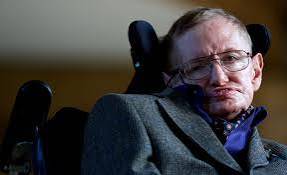Here's an overview of amyotrophic lateral sclerosis (ALS), covering its causes, signs, effects, and solutions.

1. Causes of ALS
While the exact cause of ALS is often unknown, several genetic and environmental factors have been identified as potential risk factors:
1. Genetic Mutations – Mutations in genes like SOD1 and C9orf72.
2. Family History – Family history increases the risk in some cases.
3. Environmental Toxins – Exposure to pesticides and heavy metals.
4. Military Service – Higher prevalence among veterans, possibly due to toxin exposure or physical trauma.
5. Head Injury – Repeated trauma to the head may raise ALS risk.
6. Age – Risk increases with age, particularly after 55.
7. Smoking – Linked to a slightly higher risk of ALS.
8. Heavy Physical Labor – Physical strain and injury may increase susceptibility.

9. Chronic Inflammation – Persistent inflammation may damage neurons.
10. Viral Infections – Viral infections could contribute to neurodegenerative conditions.
11. Autoimmune Disorders – Immune system abnormalities might play a role.
12. Glutamate Toxicity – Excess glutamate may harm nerve cells.
13. Oxidative Stress – Free radical damage can contribute to cell degeneration.
14. Hormonal Factors – Certain hormone levels may influence ALS risk.

15. Nutritional Deficiencies – Lack of essential nutrients could harm neurons.
16. Chemical Exposure – Lead, mercury, and other toxic substances.
17. Abnormal Protein Aggregation – Misfolded proteins may contribute to neuron death.
18. Mitochondrial Dysfunction – Mitochondrial impairment leads to energy issues in neurons.
19. Excitotoxicity – Excessive stimulation of nerve cells leading to cell death.
20. Unknown Causes – Most ALS cases are classified as sporadic, with no clear cause.
2. Signs of ALS
ALS symptoms generally start subtly and worsen over time, affecting motor function and muscle control:
1. Muscle Weakness – Especially in hands, arms, legs, or feet.
2. Difficulty Walking – Tripping, stumbling, or struggling with balance.
3. Muscle Twitching – Visible twitches, especially in arms, shoulders, or tongue.
4. Muscle Cramping – Painful cramps, particularly at night.
5. Loss of Dexterity – Trouble with fine motor skills, like buttoning a shirt.
6. Slurred Speech – Speech may become slow or difficult to understand.
7. Difficulty Swallowing – Dysphagia or choking while eating or drinking.
8. Hand Weakness – Problems gripping or holding objects.
9. Clumsiness – Dropping items or uncoordinated movements.
10. Shortness of Breath – Difficulty breathing, especially lying down.
11. Foot Drop – Inability to lift the front part of the foot, causing tripping.
12. Fatigue – Persistent tiredness or low energy.
13. Pain – Muscle pain or joint discomfort.
14. Thickened Speech – Difficulty articulating words.
15. Excessive Saliva – Difficulty swallowing can lead to drooling.
16. Weight Loss – Due to muscle wasting or trouble eating.
17. Emotional Lability – Sudden, uncontrollable laughing or crying.
18. Loss of Reflexes – Reduced or absent reflexes in affected muscles.
19. Breathlessness – Breathing issues may become more frequent.
20. Head Drop – Weak neck muscles lead to difficulty holding up the head.
3. Effects of ALS
ALS can have severe physical, emotional, and social impacts:
1. Complete Paralysis – Progressive loss of all voluntary muscle movement.
2. Loss of Speech – Inability to speak as vocal muscles weaken.
3. Loss of Mobility – Confined to a wheelchair or bed.
4. Respiratory Failure – Leading cause of death in ALS due to breathing muscle weakness.
5. Difficulty with Swallowing – Increased risk of choking and aspiration.
6. Severe Weight Loss – Due to muscle wasting and trouble with eating.
7. Emotional Strain – Anxiety, depression, and frustration from declining function.
8. Social Isolation – Withdrawal from social life due to physical limitations.
9. Dependency on Caregivers – Needing full-time assistance for daily tasks.
10. Reduced Life Expectancy – Most people with ALS live 2-5 years after diagnosis.
4. Solutions and Management
There is currently no cure for ALS, but treatments and interventions aim to slow progression, manage symptoms, and improve quality of life:
1. Medication – Riluzole and edaravone may slow disease progression.
2. Physical Therapy – Exercises to maintain mobility, prevent stiffness, and improve circulation.
3. Occupational Therapy – Teaches adaptive techniques to assist with daily activities.
4. Speech Therapy – Communication aids and techniques to manage speech difficulties.
5. Nutritional Support – High-calorie diet and feeding tubes for those with swallowing issues.
6. Respiratory Support – Non-invasive ventilation (BiPAP) or mechanical ventilation if necessary.
7. Assistive Devices – Wheelchairs, walkers, and communication devices.
8. Emotional Support – Counseling and support groups for mental health.
9. Caregiver Education – Training for family or professional caregivers.
10. Alternative Therapies – Complementary therapies like acupuncture or massage to help manage symptoms.
Early diagnosis, supportive care, and a multidisciplinary treatment approach can improve quality of life for individuals with ALS.
 blogpay
blogpay

























Total Comments: 0